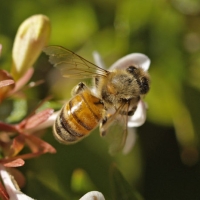Engineers Turn to Insects to Help Solve Major Problems

Humankind has always been fascinated with conquering flight. Whether it was getting across the world faster, traveling to the distant reaches of the galaxy, or even just being able to create the new must-have toy, we’ve always raced to be the first to get somewhere new through the air.
Researchers at the Harvard Microbiotics Lab aren’t trying to fly anywhere new. Teams of developers and engineers are creating robotic versions of bees, whose populations have been on the sharp decline for decades.
Russ McSpadden at Sott.net notes that while the “robobees” currently are only able to fly short distances while tethered to a power supply, the Harvard Microbiotics Lab’s members have much bigger goals in mind:
They even believe that they will soon be able to program the robobees to live in an artificial hive, coordinate algorithms and communicate amongst themselves about methods of pollination and location of particular crops.
Engineering students at the University of Virginia also are closely looking at the benefits of robotic insects in the future. “Rescue operations, environmental sampling, construction, exploration, and, as you probably guessed, spying” are all on the table, according to a recent InTheCapital article.
In another attempt to emulate our multi-legged friends, scientists are looking at how insects run, jump, and fly in order to learn "new ways to improve the control of robotic and prosthetic limbs":
They use a close interplay of neuronal control and clever biomechanical tricks. The new research could allow scientists to employ biomimicry in the future, using the findings to create machines that employ the same techniques.
It will take years to fully build robotic bees, spy drones, and prosthetic limbs that advanced, but the software that drives them will be built much faster. Robotic insects surely will be playing a much larger role in our lives before we know it—especially if they’re spying on us.

